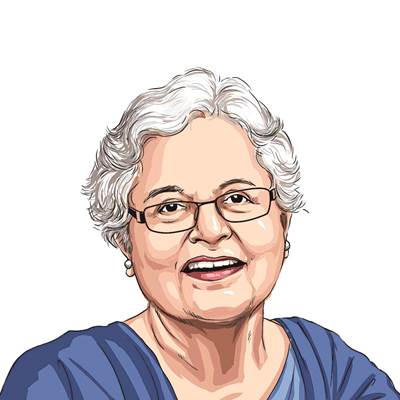 India’s Power elite: Caste, Class and Cultural Revolution | By Sanjaya Baru
India’s Power elite: Caste, Class and Cultural Revolution | By Sanjaya Baru Debate on the constantly evolving power elite in India is not a new concept. The strength of Sanjaya Baru’s latest book, however, is its topicality. Under Prime Minister Narendra Modi, the term power elite has acquired a new, thought-provoking, somewhat sinister inference. Modi, as Baru sees it, has dismantled the old order of power elites in Delhi and seeks to impose an unquestioning hegemonic domination on an ideological basis. Globalised upper-class intellectuals and liberals are suspect and to be replaced by middle-class Hindu nationalists who serve, ostensibly, the larger cause of Bharat as opposed to that of India. Any negation of the new faith is viewed with unconcealed hostility.
Baru draws parallels with Modi’s socially divisive, disruptive movement and Mao Zedong’s Cultural Revolution (1966-76), the difference being that while Modi wants to purge the old elite outside his party, Mao wanted to rid his own party of doubters within who wanted to remove him. Mao’s revolution was Marxism, Leninism and Maoism while Modi’s is premised on the Sangh’s version of Hindu nationalism. The Cultural Revolution gave free rein to the Red Guards (student-led paramilitary services instituted by Mao) to take the law into their own hands. Similarly, self-proclaimed Hindu vigilantes seem at liberty to strike anarchy and fear over cow protectionism, love jihad, alleged sedition by Muslim minorities and left-wing radicalism.
The character of India’s power elite has shifted over the years in consonance with the upheavals of electoral politics. For socialist Ram Manohar Lohia, India’s power elite at the dawn of independence was defined by Brahminical castes, privileged schooling and familiarity with the English language. Over the years, many other factors have come into play. The era of coalition politics and the introduction of Other Backward Classes (OBC) reservations, brought into prominence elite, regional parties and politically influential castes, which were not at the top of the traditional caste pyramid. Upper castes in the first Lok Sabha occupied half the parliamentary seats, while OBCs were 10 per cent. Since then, upper castes have yielded to the OBCs within Parliament and it would have been helpful if Baru had provided some current statistics. Even the once upper-caste Rashtriya Swayamsevak Sangh (RSS) has opened its top rungs to the OBCs, the category to which Modi belongs.
Baru has woven his wide-ranging experiences as academician, journalist, media adviser and economist to propound his thesis on elites. Occasionally, he shifts focus to share anecdotes of his own experiences and quotes sociologists and economists to give it a slightly academic flavour. This makes the book difficult to classify into any clear-cut slot.
Modi is not the first prime minister to work his way up from a non-elite background. Manmohan Singh, Atal Bihari Vajpayee and Lal Bahadur Shastri also came from humble stock. They, however, did not feel it necessary to keep stressing the point. Rather, Modi’s predecessors, once they arrived, sought to become a part of Lutyens Delhi and woo what was considered the Nehruvian elite. Modi, in contrast, makes no attempt to fit in. Rather, he seeks to annihilate the old landmarks of the power elite from the Nehru-Indira era. The conversion of the Nehru Memorial Museum and Library from a memorial to Nehru alone to one for all PMs is one such example.
Today, the real cultural revolution and power shift under way is not about displacing one set of intellectuals trained in the English language with another trained in the vernacular. It is of the overthrow of globalised upper-class intellectuals by provincial middle-class Hindu nationalists. These new intellectuals around Amit Shah and Yogi Adityanath view the old intellectuals of both the right or the left, whether it be a Romila Thapar or a Montek Singh Ahluwalia, as part of the same social set. They want this establishment replaced by a desi cultural revolution.
Dispersal of media power has also helped cut to size the Lutyens legacy and to reshape power elites. The cosy relationship between senior media professionals and the government has ended. Despite the growing wealth and power of owners and editors, there is a fundamental shift with politicians either controlling or owning the media directly or through proxies. The growing assertion of state power at the centre and in the states under Modi has forced the media to become docile or openly partisan with some honourable exceptions. Modi has unabashedly bent the media and the celebrity to serve his cause.
Modi is not just targeting institutions, he wants to put his stamp physically on Lutyens Delhi by rebuilding the Central Vista. Artist Anish Kapoor sees Modi’s destruction of Lutyens Delhi as borne out of his political fanaticism. He sees himself at the centre as the maker of a new Hindu India. The old order espies the new — lacking any aesthetic sensibility — as barbarians at the gate, while a new aspiring class believes that it will finally be getting its due under a strong Hindu leader.
Coomi Kapoor is contributing editor, The Indian Express
- The Indian Express website has been rated GREEN for its credibility and trustworthiness by Newsguard, a global service that rates news sources for their journalistic standards.

 Continue with Facebook
Continue with Facebook Continue with Google
Continue with Google
